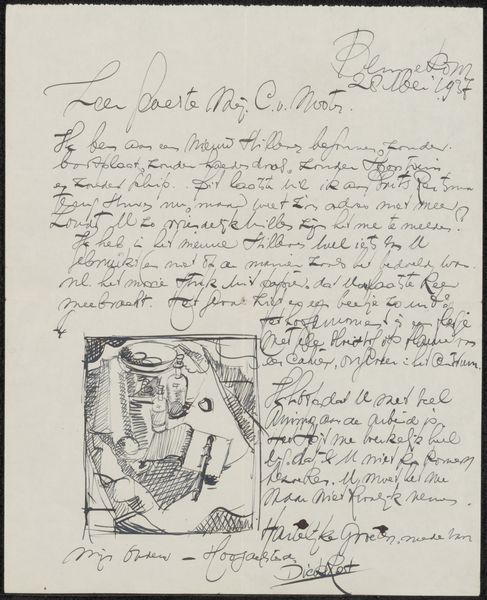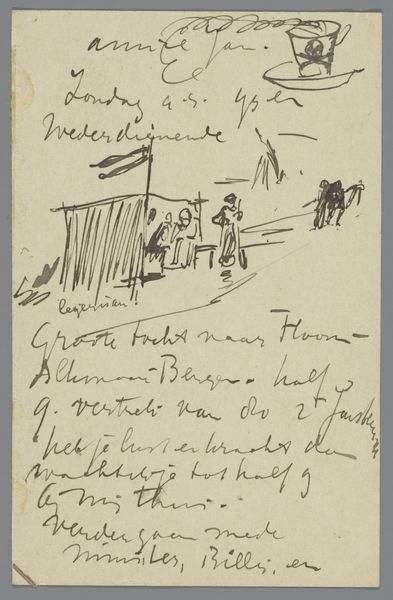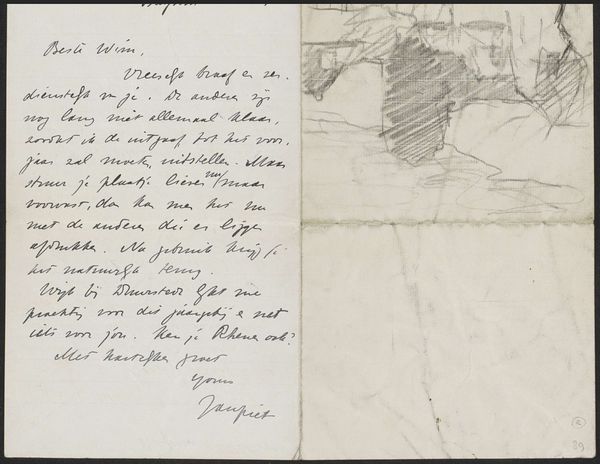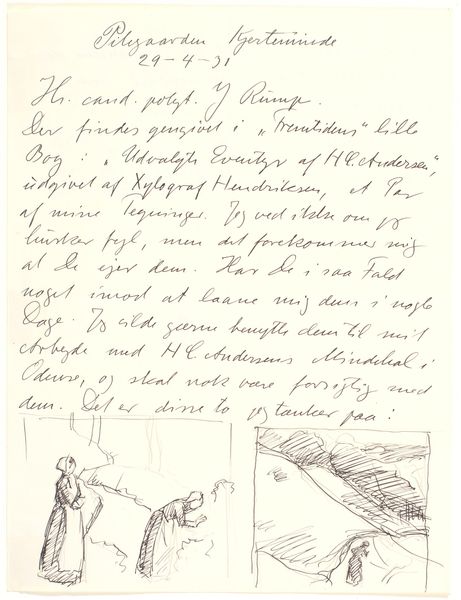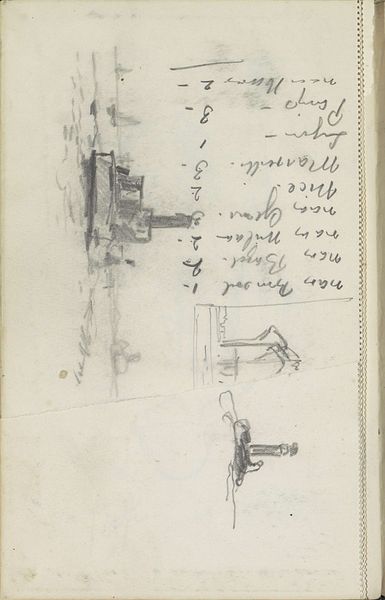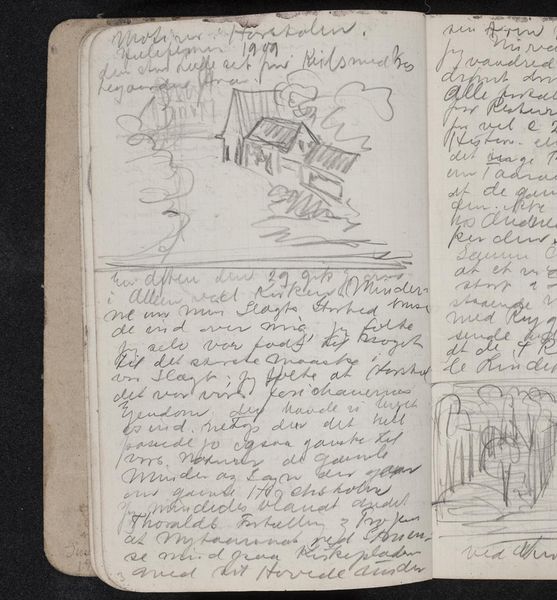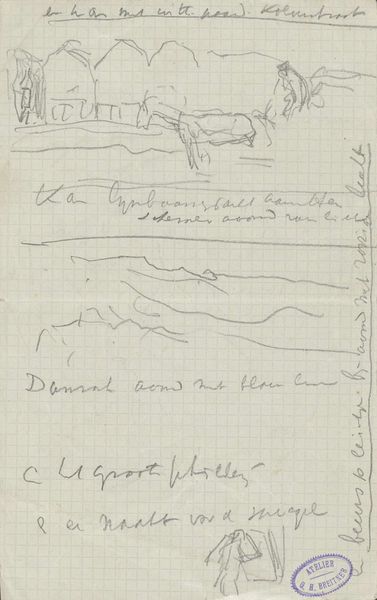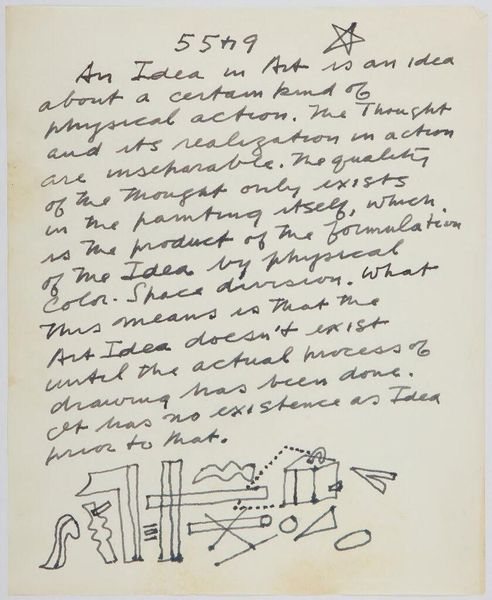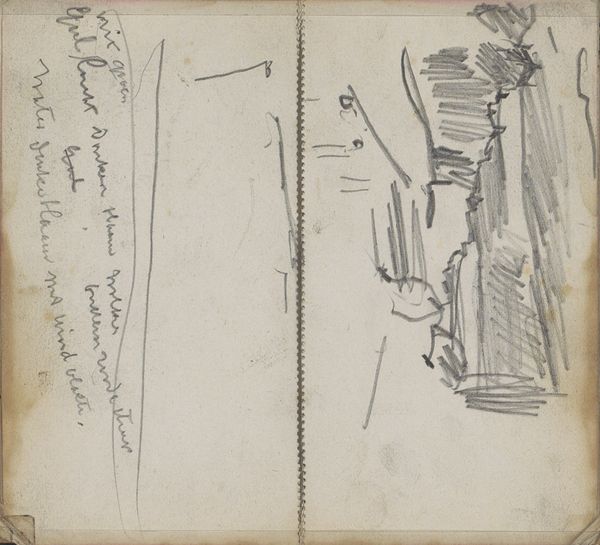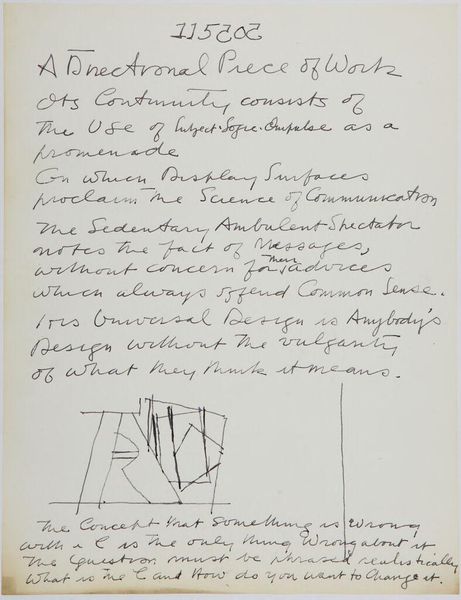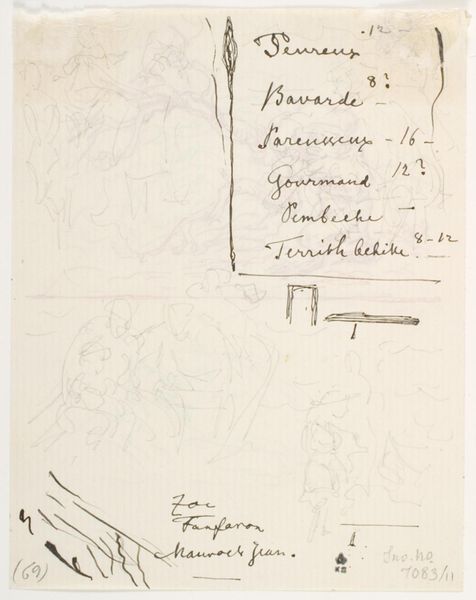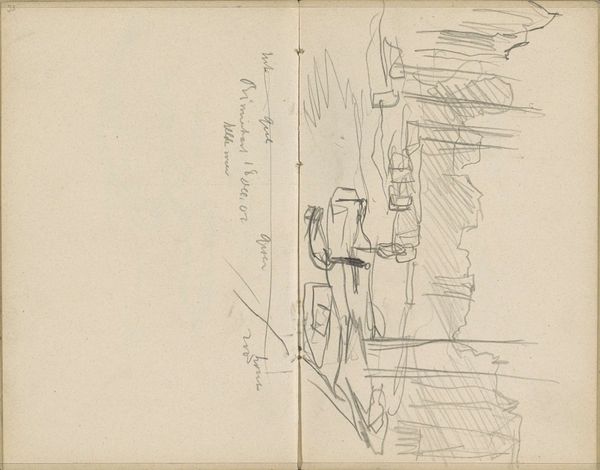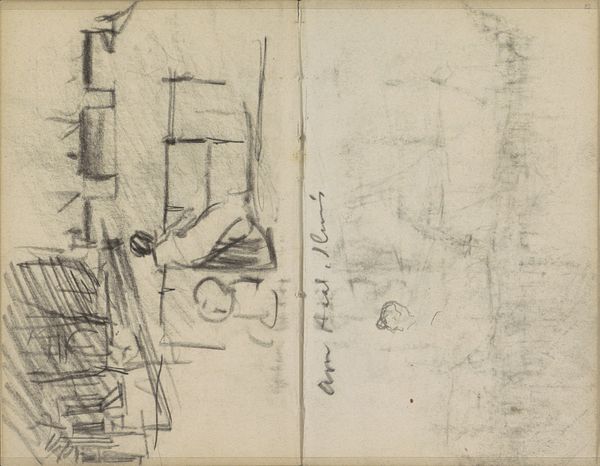
Copyright: Rijks Museum: Open Domain
Curator: This small pen and ink drawing is titled "Brief aan Philip Zilcken," possibly created in 1891 by Félix Hilaire Buhot. What strikes you first about it? Editor: The dynamism. Despite its small size, the quick, almost frantic lines create a sense of bustling activity, especially with the suggestion of steam and ships. It's like a fleeting impression captured in ink. Curator: It certainly reflects the Impressionist style in its pursuit of capturing a momentary experience. Buhot was deeply involved in the art scene of his time; Zilcken was actually a well-known Dutch artist, critic and art dealer. The letter possibly sheds light on Buhot’s connections and activities within artistic circles. Editor: Look at the way he uses the pen—short, rapid strokes to build form and texture. The smoke billowing from the ships and the steeple – there's a real sense of atmosphere despite the limited tonal range. How does Buhot's style position him within the artistic milieu of the late 19th century? Curator: Buhot’s work often straddled printmaking and drawing, reflecting the era's fascination with experimentation across different media. His detailed renderings of urban scenes aligned him with artists exploring modernity's impact on society and capturing images of rapidly changing urban landscapes, very timely! Editor: Notice the spatial compression; he creates depth with the different drawing sizes, but also collapses everything into the immediate foreground, really capturing the scene as it’s being documented in real time. Curator: Indeed. The loose strokes contribute to this sketch-like quality that places more emphasis on immediacy rather than hyper-realism. This suggests the growing importance of artists bearing witness to, and responding to, the ever-changing industrializing cities. Editor: It’s interesting how such simple means can evoke such a vibrant urban feel. It prompts me to think about the speed with which visual information changed then and still now, because his quick style speaks volumes even over a century later. Curator: For me, this drawing acts as an important record of Buhot's professional and personal relationships. It connects to broader questions about art market dynamics and how artists cultivated critical connections at that time. It offers a snapshot of an era and its dialogues through a personal exchange.
Comments
No comments
Be the first to comment and join the conversation on the ultimate creative platform.
